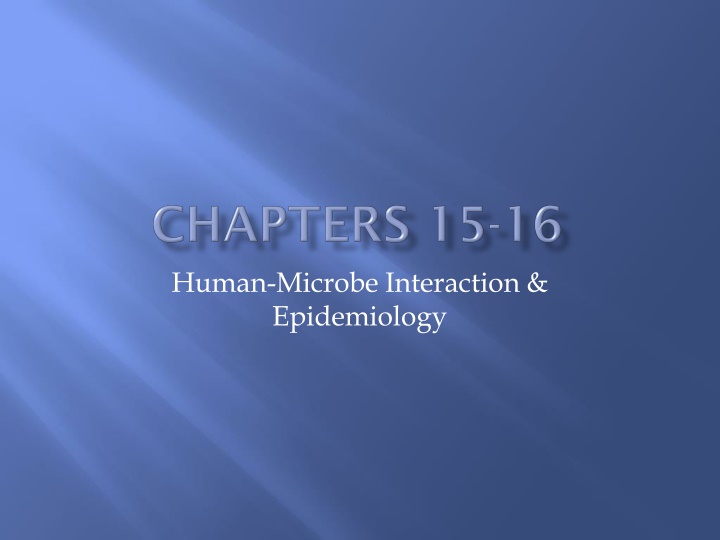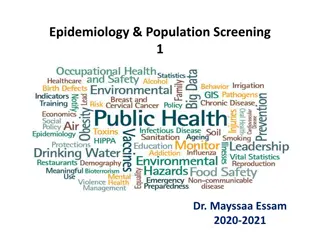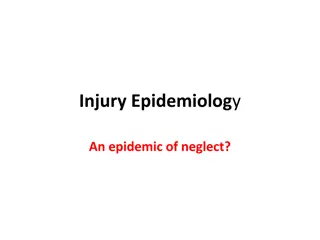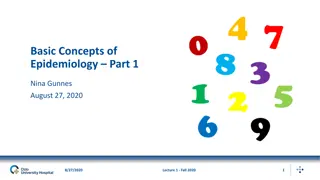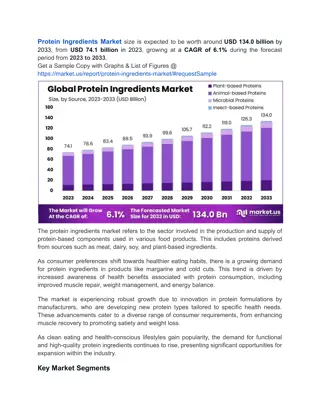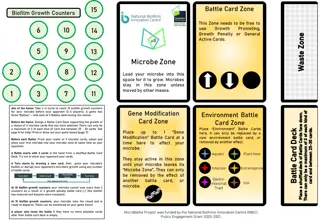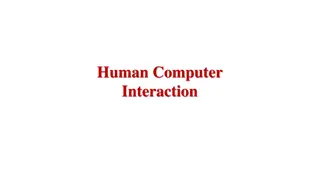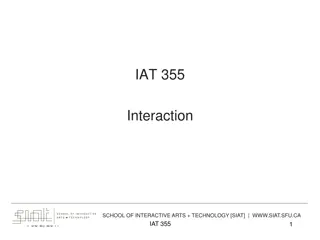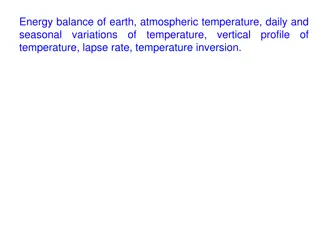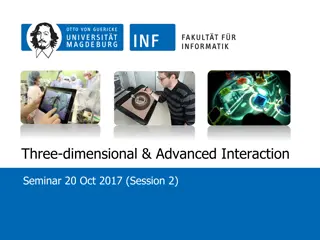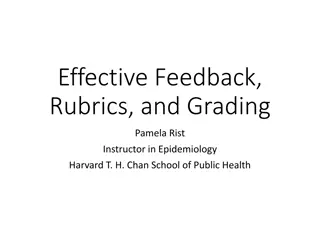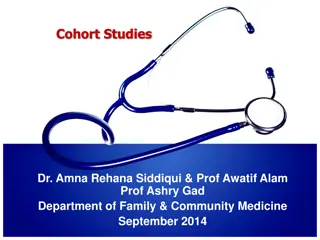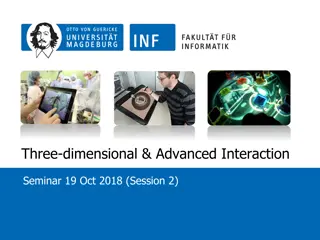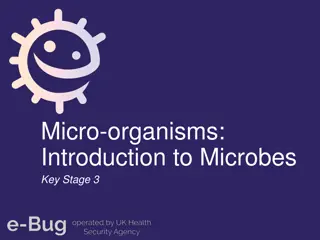Human-Microbe Interaction & Epidemiology: The Intricate Balance Within
Microbes inhabit the human body in large numbers, playing crucial roles in health and disease. This interaction begins at birth and continues throughout life, shaping the body's defense mechanisms and overall well-being. The process of acquiring resident flora involves a delicate balance between different organisms and the environment. Initial colonization, starting from the womb to the first breath and beyond, has long-lasting effects on an individual's microbiome. Understanding this intricate relationship is vital for studying epidemiology and human health.
Download Presentation

Please find below an Image/Link to download the presentation.
The content on the website is provided AS IS for your information and personal use only. It may not be sold, licensed, or shared on other websites without obtaining consent from the author.If you encounter any issues during the download, it is possible that the publisher has removed the file from their server.
You are allowed to download the files provided on this website for personal or commercial use, subject to the condition that they are used lawfully. All files are the property of their respective owners.
The content on the website is provided AS IS for your information and personal use only. It may not be sold, licensed, or shared on other websites without obtaining consent from the author.
E N D
Presentation Transcript
Human-Microbe Interaction & Epidemiology
13.1 The Human Host A. Resident Flora: The Human as a Habitat 1. Refers to a large array of microorganisms that favorably inhabit the human body in abundance 2. Cell for cell, microbes on the human body outnumber human cells at least 10 to 1
A) Total cells in human body = 1013 B) Total bacteria in the mouth = 1010 C) Total bacteria on the skin = 1012 D) Total bacteria in the G.I. tract = 1014
B. Acquiring Resident Flora 1. Microbes accumulate over time immediately following birth by simple interaction with the environment 2. Microbes are found almost everywhere on and in the body but are more prominent in locations exposed to the environment (skin and digestive tract) 3. Levels of specific microbes can fluctuate a great deal up and down but normally stay relatively constant
A) Competition with other organisms and repeated interaction with the environment play a role in this balance 4. Some pathogens can be found in the normal flora but generally don t cause problems because competition limits their growth 5. The flora even plays a role in the body s defense by producing antibiotics and inhibiting entry & growth of other pathogens
C. Initial colonization 1. The uterus is normally sterile during development 2. As soon as the fetal membrane breaks, microbes in the vagina can enter the womb and begin to colonize the skin 3. During the birth the baby is exposed to an even larger number of microbes 4. Colonization of the respiratory system begins with the baby s first breath
5. Exposure continues as the baby comes into contact with the mother, other family, hospital staff, etc. 6. Colonization of the intestines begins during the first feeding A) The microbes vary dependent on whether the baby is bottle or breastfed 7. Stabilization of the eventual adult flora occurs following weaning, the introduction of solid food, and the eruption of teeth
D. Flora of Specific Regions 1. Skin A) Flora resides on or in the skin layer B) Dryness of the skin, humidity, occupational exposure, and clothing influence the make-up of the flora C) A very rich flora community is located at regions where the skin joins with the mucus membrane
D) 2 distinct populations 1) Transient flora a) Clings to the surface but doesn t usually grow there b) Acquired during routine exposure to the environment or other people c) Is drastically influenced by hygiene
2) Resident flora a) Inhabits deeper portions of the epidermis and in glands and follicles b) Population is more stable and predictable and less influenced by hygiene c) Primarily composed of bacteria (Staphylococcus, Pseudomonas & Janthinobacterium sp.) and fungi (Candida albicans)
2. Gastrointestinal tract A) Mouth & Esophagus 1) Streptococcus, Neisseria, Lactobacillus & Haemophilus sp. are common B) Stomach 1) Helicobacter pylori is the only known bacteria that can live in the stomach C) Large Intestine & Rectum (collectively referred to as enterics or enteric bacteria) 1) Almost entirely composed of anaerobes
a) Bacteroides, Fusobacterium, Lactobacillus and Clostridium are prevalent b) Coliforms, including E. coli, Enterobacter, and Citrobacter are found in smaller numbers i) Coliforms Gram-negative, lactose-fermenting, facultative anaerobic bacteria found in the colon ii) Contribute to intestinal odor and the discomfort caused by lactose intolerance
3. Respiratory tract A) Primarily seen in upper respiratory tract and varies in different regions of the respiratory pathway 1) Nasal entrance Staphylococcus 2) Nasopharynx Neisseria 3) Oropharynx Streptococcus 4) Laryngopharynx & tonsils Haemophilus
B) Conditions in the lower respiratory tract are unfavorable for permanent residents 4. Urogenital tract A) Urethra 1) Usually sterile but can sometimes find nonpathogenic Streptococci, Staphylococci, Lactobacillus and occasionally coliforms 2) The shorter female urethra contributes to their increased susceptibility to urinary tract infections (UTI s)
B) Vagina 1) Before puberty a) Staphylococci, Streptococci & Candida are common b) pH is about 7 2) After puberty a) Lactobacilli becomes prevalent bacteria; Candida is still present
b) Estrogen causes the vaginal mucosa to secrete glycogen, which is fermented by bacteria releasing lactic acid c) pH lowers to about 4.5 i) Thought to prevent the establishment of microbes that could be harmful to a developing fetus 3) After menopause a) Flora and pH return to pre-puberty levels
13.2 The Progress of an Infection A. Pathogen a microbe whose relationship with its host is parasitic and results in infection and disease B. Type and severity of infection depend on pathogenicity of the organism and the condition of its host 1. Pathogenicity an organism s potential to cause infection or disease
A) True pathogens microbes with the ability to cause disease in individuals with normal immune systems B) Opportunistic pathogens cause disease when the defenses are compromised
2. Virulence factors A) Properties that enable a microbe to invade and infect a host B) Virulence 1) The ability of a microbe to cause infection that takes the presence or absence of virulence factors into account; the more virulence factors an organism has, the more virulent it is
C. Becoming Established: Step One Portals of Entry 1. The characteristic route that a microbe takes to enter body tissues is known as its portal of entry A) Exogenous agents enter the body from the outside environment; ex. common cold B) Endogenous agents already exist in the body; ex. candidiasis (yeast infection) C) Many pathogens only cause disease when they enter through a specific portal
2. Infectious Agents that Enter the Skin A) Intact skin is very tough few microbes can penetrate B) Most pathogens enter through damage to the skin; nicks, abrasions, and punctures C) Some create their own passageways using digestive enzymes or bites D) The conjunctiva is very susceptible to infection
3. The Gastrointestinal Tract as Portal A) Pathogens contained in food, drink, and other ingested substances B) Adapted to survive digestive enzymes and pH changes C) Most enter directly through the mucus membranes, but ulcers and other damage creates another pathway into the body D) The rectum isn t considered a normal portal of entry but must be considered a potential portal for individuals who practice anal sex
4. The Respiratory Portal of Entry A) The portal of entry for the greatest number of pathogens B) Most enter through the mucus membranes of the URT but some can enter/infect the LRT C) Most microbes entering this portal are small in size to avoid its defenses
5. Urogenital Portals of Entry A) The agents sexually transmitted diseases (STDs) and urinary tract infections (UTI s) can enter here B) Enter through the skin (broken or unbroken) or mucosa of penis, external genitalia, vagina, cervix, and urethra
6. Pathogens that Infect During Pregnancy and Birth A) Some microbes can cross the placenta B) Other infections occur perinatally when the child is contaminated by the birth canal 1) These agents would generally use the same portal of entry as they would with an adult
D. Becoming Established: Step Two Attaching to the Host (Adhesion) 1. Adhesion A) Process by which microbes gain a more stable position in the body 1) Bacteria often attach via fimbrae, flagella, pili, slime layers, or capsules 2) Virus often attach to a specific receptor on the cell surface; may involve specific viral proteins (spikes)
3) Protozoa use their structures of locomotion to burrow into the host cell 4) Worms mechanically fasten using suckers, hooks, or barbs E. Becoming Established: Step Three Surviving Host Defenses 1. Pathogens must then survive our host defenses to cause infection 2. Many have adapted ways to avoid immune destruction/detection (virulence factors)
A) Antiphagocytic factors used by some pathogens to avoid phagocytes B) Leukocidins toxic to white blood cells C) Coagulase causes the formation of clots to inhibit WBC movement D) Extracellular surface layer makes it difficult for the phagocyte to engulf them E) Some can survive inside phagocytes after ingestion
F. Causing Disease: How Virulence Factors Contribute to Tissue Damage 1. Extracellular Enzymes A) Break down and inflict damage on tissues or dissolve the host s defense barriers 1) Mucinase 2) Keratinasae 3) Collagenase 4) Hyaluronidase
B) Bacterial Toxins 1) Specific chemical product that is poisonous to other organisms a) Exotoxin released by living bacterial cells into infected tissue b) Endotoxin released when the bacteria is damaged or destroyed 2) Examples of Toxins a) Neurotoxins damage nervous tissue i) Ex. Tetanospasmin, anthrax toxin, botulinum toxin (botox)
b) Enterotoxins cause symptoms associated with intestinal disturbances i) Ex. cholera & shiga toxins c) Cytotoxins damage a variety of cells by damaging cell membranes or interfering with metabolism i) Ex. streptolysin and other hemolysins
3) Toxin-Related Terminology a) Toxigenicity the power to produce toxins b) Toxinoses diseases caused by toxins i) Toxemias toxinoses in which the toxin is spread by the blood from the site of infection (tetanus and diphtheria) ii) Intoxications toxinoses caused by ingestion of toxins (botulism)
G. The Process of Infection and Disease 1. Microbes eventually settle in a particular target organ and continue to cause damage at the site A) Frequently weakens host tissues B) Necrosis accumulated damage leads to cell and tissue death
2. Patterns of Infection A) Localized infection 1) A single microbe enters the body and remains confined to a specific tissue 2) Examples: boils & fungal skin infections B) Systemic infection 1) An infection spreads to several sites and tissue fluids usually in the bloodstream
2) Examples: viral diseases such as measles, chickenpox, and AIDS; bacterial diseases such as anthrax, typhoid fever, and syphilis 3) Also includes diseases that travel via nerves (rabies) and cerebrospinal fluid (meningitis) C) Focal infection 1) When an infectious agent breaks free of its local infection and is carried to other tissues 2) Example: tuberculosis
D) Mixed infection 1) Several microbes establish themselves simultaneously at the infection site 2) Examples: gas gangrene, dental caries, and wound infections E) Infections can be described according to their sequence 1) Primary infection (ex. chickenpox) 2) Secondary infection (ex. skin infection following scratching of chickenpox lesion)
F) Infections can be described by their time-frame 1) Acute infection rapid onset with severe but short-lived symptoms 2) Chronic infection progress and persist over a long period of time 3. Signs and Symptoms: Warning Signals of Disease A) Sign any objective evidence of disease as noted by an observer 1) Related Terms
a) Leukocytosis an increase in WBC count b) Leukopenia a decrease in WBC count c) Bacteremia circulation of bacteria in the bloodstream d) Viremia circulation of a virus in the blood e) Toxemia the agent remains localized but its toxins are spread throughout the body
B) Symptom the subjective evidence of disease as sensed by the patient C) Syndrome when a disease can be identified or defined by a certain complex of signs and symptoms D) Asymptomatic or subclinical infections infections with no obvious signs/symptoms
H. The Portal of Exit: Vacating the Host 1. Specific route taken by pathogens to leave the host 2. Often the exit is the same as the portal of entry 3. Respiratory and Salivary Portals A) Mucus, sputum, saliva, nasal drainage, and other moist secretions act as media for exit B) Breathing, coughing, sneezing, laughing, and talking push these pathogens into the environment
4. Skin Scales A) Most individuals shed billions of dead skin cells each day and it is the largest component of household dust B) Potential exit for the agents of fungal skin infections, syphilis, herpes simplex, and smallpox
5. Fecal exit A) Common exit for intestinal pathogens and helminth worms (specifically eggs or larva) B) Fecal contamination of drinking water and its use as a fertilizer often raise public health issues
6. Urogenital tract A) Vaginal discharge/semen 1) STD s 2) Vagina is also location of neonatal infectious agents B) Urine 1) High acidity make is less common mode of exit but agents of typhoid fever and tuberculosis may exit in urine
7. Blood A) There is no natural exit for blood except menses B) Blood-feeding insects often carry pathogens from human blood C) Shared needles and small abrasions causes by intercourse can also result in the transmission of pathogens especially HIV and hepatitis
I. Reservoirs: Where Pathogens Persist 1. Reservoir the primary habitat in the natural world from which a pathogen originates 2. Source the individual or object from which an infection is actually acquired 3. Human Reservoirs A) Most significant source of the majority of communicable human diseases B) People who have symptomatic infection are obvious sources (ex. chickenpox)
C) Carrier any person who inconspicuously shelters a pathogen that can be spread to others 1) Asymptomatic carriers a) Incubation carriers b) Convalescent carriers c) Chronic carrier 2) Passive carrier D) Diseases confined to human reservoirs are the easiest to control
4. Animals as Reservoirs and Sources A) Vector a live animal that transmits an infectious agent from one host to another 1) Types of vectors a) Mechanical organism carries the microbe on their body from one place to another b) Biological often required for part of the parasite s life cycle; carries the microbe in its body
2) Examples of common arthropod vectors a) Mosquitoes Malaria b) Ticks Lyme disease c) Flies (biting) African sleeping sickness & River blindness d) Fleas Plague
B) Zoonosis an infection indigenous to animals but naturally transmissible to humans 1) At least 150 known zoonoses worldwide (ex. bird flu, hantavirus, rabies) 2) Diseases that can be spread via animals are probably impossible to eliminate
5. Nonliving Reservoirs A) Pathogens with environmental reservoirs are the hardest to eliminate 1) Soil agents for anthrax & tetanus 2) Water agents for Legionnaires disease & Pseudomonas
